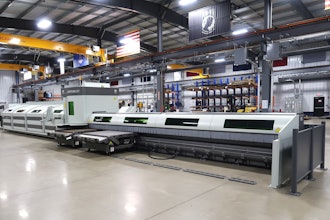Testing and assessments – and an experienced technician – are crucial to the vulnerabilities that could affect data center performance. Together they can identify the gaps in an availability strategy, evaluate risks to the data center, and make recommendations for improvement.
Why Are Tests and Assessments Important?
The IT infrastructure has evolved into an interdependent, business-critical network that relies on the data center as its hub. Growing business demands are forcing data center managers to support more equipment, resulting in increased heat loads. Corporate attention on the data center is also driving the need for greater flexibility balanced against high availability and the lowest total cost of ownership.
Other factors can influence system performance, such as moving or changing computer equipment without considering the underlying support strategies. Obstructions such as abandoned cabling can reduce air flow for cooling systems. Even new facilities can experience nagging cooling problems that create continuity risks or interfere with facility performance. Some of these issues might be easily noticed to the trained data center manager’s eye, but others are less obvious, leaving the data center open to vulnerabilities that could adversely affect its operational performance.
Testing and assessments – and an experienced technician – are crucial to avoiding these issues. Together they can identify the gaps in an availability strategy, evaluate risks to the data center, and make recommendations for improvement.
When to Get a Professional Involved
Today’s data center manager is trained to solve a lot of problems within their facility, but when should they get an industry professional involved? Below are some questions and issues data center managers should consider:
Are you concerned about disruptions to your operations such as utility outages, equipment failures, or hot spots?
Data center managers are still concerned with it – in a 24x7 world, nobody can afford even a minute of down time.
Data center managers often have excellent programs in place to ensure performance of major systems such as UPS, batteries and CRAC units. However, a truly comprehensive testing and assessment program can ensure all potential vulnerabilities throughout the electrical and cooling infrastructure are properly addressed.
Do you worry about the costs associated with running your data center?
Efficiency is clearly an emerging concern in the IT industry. The bad news is that energy is one of the most expensive costs to a data center – but the good news is that it is controllable. Assessments can help a data center manager identify how to save energy, and a trained technician can outline the ROI of how a facility will save money over time by improving its infrastructure and strategy. In addition, a technician with deep industry knowledge can also provide information on federal and local government programs available to companies that implement green initiatives in their facility.
If your CIO asked you to add 10 servers to support a new initiative, can you answer the question “We can handle that” or is it “I don’t know?”
Do you know how much IT equipment your data center can support?
Most data centers are built with a good design and strategy in place. But during the last several years, the industry has seen a tremendous amount of consolidation and expansion within facilities – and if a center was not designed with at least a five-year plan in mind, it likely cannot handle the volume of IT equipment required in today’s data center.
Unfortunately, there was a lot of poor planning in data center design 10 years ago, leaving many large companies with no choice but to abandon data centers and start new – the older data centers simply weren’t designed to handle today’s business model which dictates data center expansion on a daily basis.
Assessments can help current facilities accommodate consolidation and expansion – and save money.
Do you have concerns about liability issues?
Are you positive you’ve done everything you can to protect your people and
company?
Exposure and risk to hazards have increased in recent years because of higher service voltages and available fault current in electrical systems. And because of the need for 24x7 availability, many facilities are less likely to shutdown to perform maintenance on electrical systems that could pose a risk.
One major concern in the industry is an arc flash, a voltage breakdown of the resistance of air resulting in an arc which can occur where there is sufficient voltage in an electrical system and a path to ground or lower voltage.
The U.S. Department of Labor’s Occupational Safety and Health Administration (OSHA) and National Fire Protection Association (NFPA) have taken great strides in the past five years to develop standards to help protect workers in the industry, especially when it comes to arc flashes.
OSHA 1910.132 (d) requires employers to assess the workplace to determine if hazards are likely to be present and assign Personal Protection Equipment (PPE) appropriate for the hazards.
NFPA 70E requires a hazard analysis be performed and documented to determine the incident energy exposure of the worker, flash protection boundary and PPE usage based upon the associated hazard.
Failure to comply with OSHA and NFPA standards can result in fines as well as exposing an organization to liability risks if an employee or contractor is harmed.
In many cases, organizations might not be aware of these hazards and the potential damage – both monetary and bodily – they might be risking. Regular testing and assessments can uncover these hazards and help organizations comply with government regulations.
Common Data Center Tests and Assessments
Electrical Assessment – Businesses have a 30 percent probability of experiencing power quality problems if their facility is more than five years old and/or has undergone significant changes. An electrical assessment can determine if the electrical system is adequate for the data center both now and in the future. It evaluates the integrity
of a facility’s power system to maximize availability of the mission-critical infrastructure.
Cooling Assessment – Conducting a critical assessment of existing cooling strategies can
enhance the data center’s operational performance and expose vulnerabilities within existing cooling or electrical systems. A cooling assessment can help eliminate hot spots, improve airflow and reduce heat in your mission-critical facility.
Thermal Assessment – Taking temperature readings at critical points is the first step in identifying hot spots and resolving problems that could result in equipment degradation. As part of the cooling assessment, these thermal readings will determine whether heat is being successfully removed from sensitive heat-generating computer equipment, including blade servers.
Testing and Assessments
Computational Fluid Dynamics (CFD) – Combined with air flow measurements, this is the best tool for demonstrating and analyzing air flow characteristics within the data center while conducting a cooling assessment. The CFD tool is designed to create a better understanding of why hot spots are present and illustrate the effects of under-floor
obstructions on air flow.
Infrared (IR) Scan – An IR scan is a non-invasive method for identifying defective components, degraded electrical connections and other conditions that could result in a fire or electrical breakdown. Typically, traditional maintenance activities do not uncover these types of problems and most go undetected until there is an operating failure.
Short Circuit and Coordination Studies – Short circuit and coordination studies can uncover inadequately rated or uncoordinated protection equipment. Proper settings resulting from these studies can prevent damage to critical equipment, avoid nuisance maintenance trips, and isolate faults, avoiding IT availability problems.
One-line Diagram – A one-line diagram is a “blueprint” for operational, maintenance and testing activities in a data center. It depicts all incoming lines, fuses, cutouts, switches and breakers in a facility as well as major systems such as UPS, PDU’s, ATS, and critical loads. NFPA 70e requirements mandate accurate, up-to-date one-line diagrams. These documents are essential for documenting, troubleshooting, and communicating information about your power systems.
Arc Flash Study – Arc Flash studies provide a detailed analysis of electrical hazards, recommend ways to mitigate hazards, generate proper labeling for electrical equipment to quantify the hazards, specify appropriate PPE, and provide a basis for training personnel on safely working with or near electrical equipment in a specific facility.
Efficiency Assessment – Efficiency assessments apply evaluations of electrical and cooling infrastructure with CFD Modeling to identify opportunities to reduce energy costs associated with the data center.
Conclusion
Data centers are dynamic environments where heat loads are constantly increasing and challenging power and cooling strategies. Ongoing technology shifts and blade servers create extreme heat densities and hot spots that must be detected and corrected before they result in component failure and downtime.
Testing and assessments can protect the data center investment and increase data center availability, performance, and energy efficiency. They also offer the peace of mind that comes with knowing that data center equipment will provide the high level of availability critical to business continuity.
Testing and assessments should be used when:
• Sites have been acquired and/or gone through systems consolidations.
• Facilities have experienced any disruptions caused by power, cooling, or IT system failures.
• Managers need to plan for IT expansion or optimization of the data center using
limited space, power, and cooling resources.
• Managers need to reduce costs, save energy, and/or operate the data center using
more environmentally-friendly methods.
Liebert Services is committed to helping organizations understand their critical infrastructure, identify problems, and incorporate solutions. For more information, visit www.liebert.com.






















